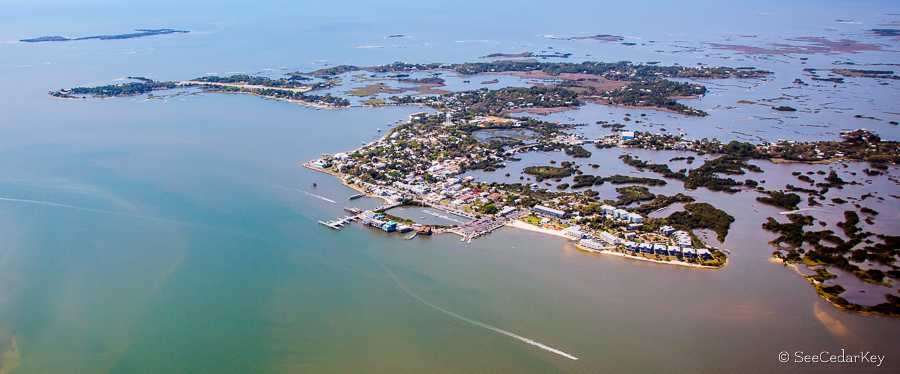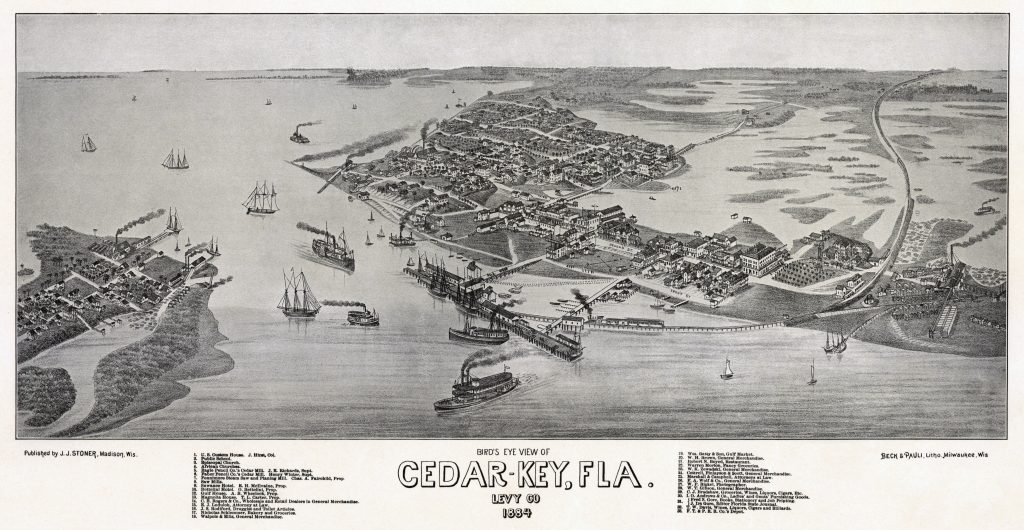
”Nobody comes here by accident. This isn’t on the way to anyplace.”
Right. Chances are, if you were not heading for Cedar Key you would never get here. Because you are not on your way to somewhere, because there is no other somewhere… It is as simple as that.
You have to turn off from a dull stretch of U.S. 19 at a blinking traffic light, head west across more than 20 miles of pine forests and salt marshes — at night the trip is accompanied by frogs croaking loudly enough to drown out a Harley-Davidson — until you can’t go any further without falling into the Gulf of Mexico. And here you are.
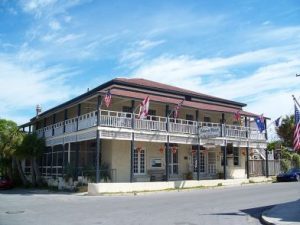
But the reward is, with a few exceptions, the view of the island community from the wraparound second-floor balcony at the Island Hotel looks pretty much the way it did 20 years ago. Or 100… Because you have come to one of the very few remaining places from the Old Florida times. But having said that, Cedar Key has also partly quite a dramatic history. And once it was an important and vital part of a Florida struggling with colonization and civilization efforts…
When it all started…
Even if evidence suggests human occupation as far back as 500 BC, the first maps of the area date to 1542, labeled as “Las Islas Sabines” by a Spanish cartographer, we prefer to start around the mid-1800´s.
In 1860 Cedar Key became the western terminus of the Florida Railroad, connecting it to Fernandina on the east coast of Florida. David Levy Yulee, U.S. Senator and President of the Florida Railroad, had acquired most of Way Key to house the railroad’s terminal facilities. A town was platted on Way Key in 1859, and Parsons and Hale’s General Store, which is now the Island Hotel, was built there in the same year. On March 1, 1861, the first train arrived in Cedar Key, just weeks before the beginning of the Civil War.
In 1865 the Eberhard Faber mill was built on Atsena Otie Key – the island just across the bayou from todays´ Cedar Key. The Eagle Pencil Company mill was built on Way Key, and Way Key, with its railroad terminal, passed Atsena Otie Key in population. Repairs to the Florida Railroad were completed in 1868 and freight and passenger traffic again flowed into Cedar Key. The “Town of Cedar Keys” was incorporated in 1869, and had a population of 400 in 1870.
When Henry Plant’s railroad to Tampa began service in 1886, Tampa took shipping away from Cedar Key, causing an economic decline in the area. The fourth storm of the 1896 Atlantic hurricane season was the final blow. At approximately 4 a.m. on September 29, 1896, a 10-foot (3.0 m) storm surge swept over the town, killing more than 100 people. Winds north of town were estimated at 125 mph, which would classify it as a category 3.
The hurricane wiped out the juniper trees still standing and destroyed all the mills. A fire on December 2, 1896 further damaged the town. In following years, structures were rebuilt on Way Key, a more protected island inland, but the damage was done. Today, there are a few remnants of the original town on Atsena Otie Key, including stone water cisterns, and a graveyard whose headstones conspicuously date prior to 1896. There are also many of the Eastern red cedar (Juniperus virginiana subsp. silicicola) trees that originally attracted the pencil company, and for which the community was named.
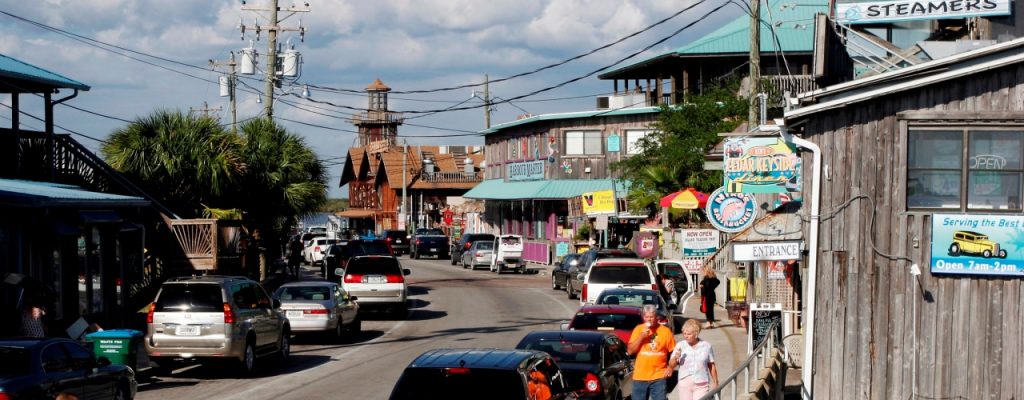
These days…
Today Cedar Key is a totally different kind of town – or not… If you need multiscreen cinemas, shopping malls or a Wal-Mart, be prepared to make a day of it, coming and going.
But if you can make the mental transition to island life, as it was on Key West 50 years ago – before there was a Jimmy Buffett clone singing Margaritaville through the open door of every bar – Cedar Key can take you back to a different time. The waiters at the Island Hotel used to tell their guests:
” Take off your watch. Use this hot cloth to bathe your hands and face, sit back and enjoy the ambience. There isn’t a telephone or a television set in your room, there is no place you have to be and nothing here that won’t wait for you. We have no microwave and no deep-fat fryer, so we can give you your seafood any way you want it, except fried — or fast.”
A few deep breaths later you would realize the value of that and find nothing strange about the fact that the hotel’s vice president in charge of public relations was not allowed in the restaurant or kitchen because he was a basset hound. When new owners took over a few years back, Bernard the basset was replaced — with Hannah, a German shepherd.
In its 141 years, The Island Hotel has also been a general store, vegetarians’ retreat (during which the owner closed the bar and was immediately burned in effigy) and reputedly a brothel. A painting of Neptune in its cocktail lounge sports three bullet holes, souvenirs of rowdier times.
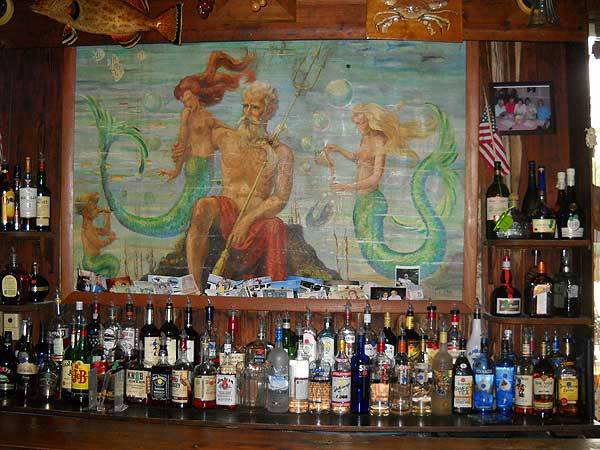
Today one of the major activities at Cedar Key is of course based on tourist visitors. But – with all due respect – the distance and the location also serve as a filter, to keep out those who are hesitant for the ride. Most of the visitors to Cedar Key are coming for a reason – the interest for the history of Cedar K. You will also find two museums: one State Museum and one small local historic museum. You can easily cover both in half a day. And after that a lunch down at the former docks.
Else, the most important business at Cedar K. today is clam harvesting. This is a multi-million dollar industry and the clams from Cedar Key are famous.
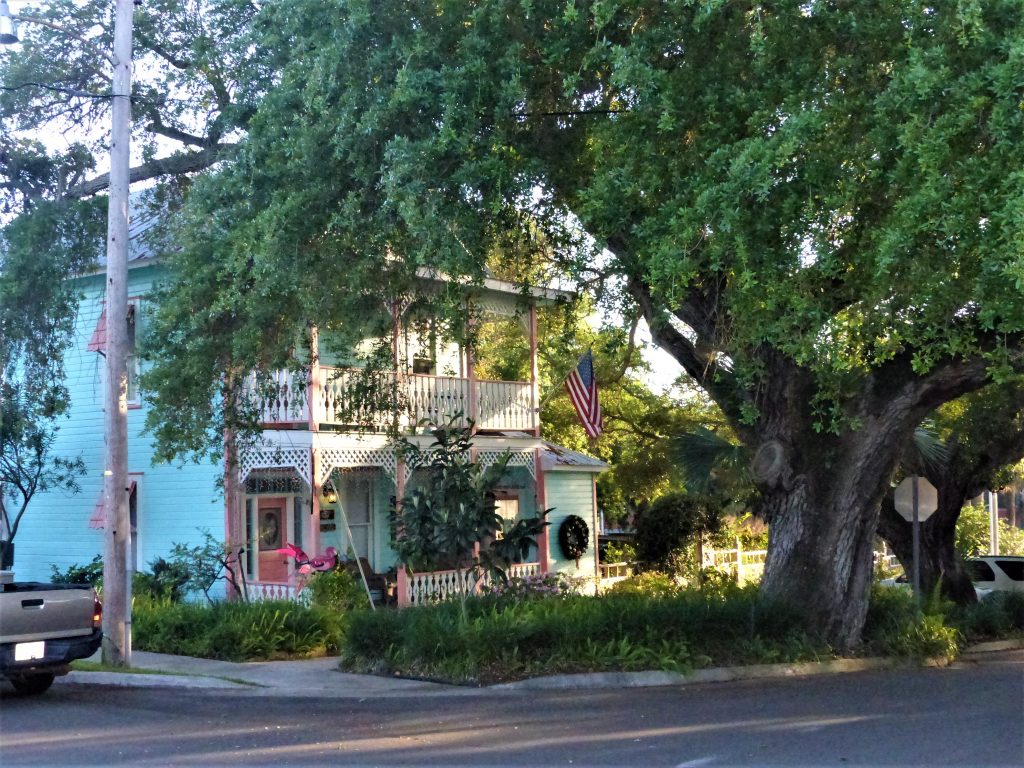
Our favorite stay is at Cedar Key Bed and Breakfast. That building is by the way the original building for the Director of one of the pencil factories. At least in all Europe – especially in Germany – most school children (at least before the word processing- and computer era started) are familiar with the pencil brands of Eberhard Faber (later Faber-Castell) and The Eagle. So now you know where these manufacturers harvested the cedar tree to form the outer shell to the pencils.
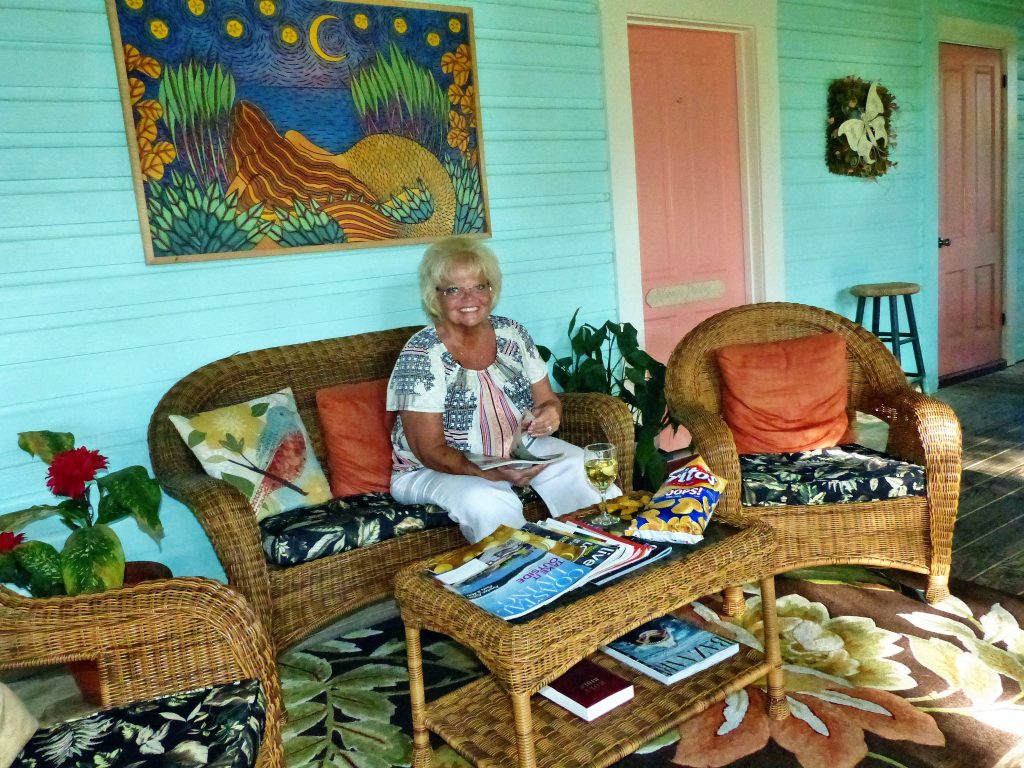
This Bread and Breakfast Hotel is like coming home to some country side friends place. “Homey” is a keyword. And if you feel for it, sitting on the veranda, you can snitch some cookies yourself from the “bottomless cookie jar” in the kitchen…
The island is partially protected by being one of 12 islands in a National Wildlife Refuge just off the main island. That designation gives the osprey, brown pelican, white ibis, egret and cormorant a safe place from which to make picture-perfect flights over returning fishing boats. Onshore, folks may even take notice as they cheer the setting of the sun.
